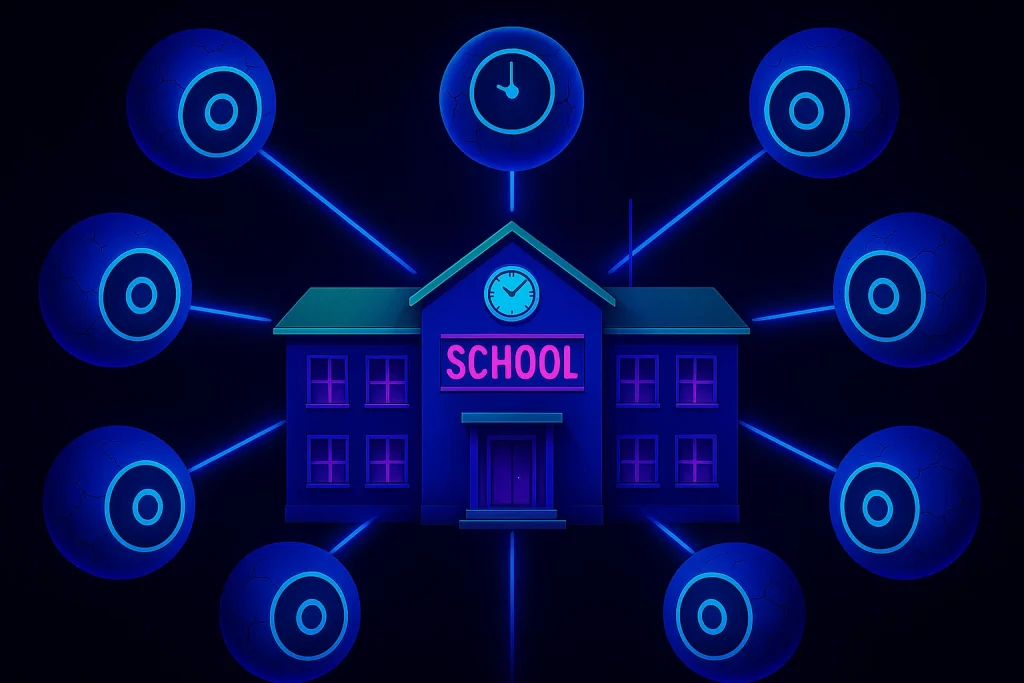Physical Address
304 North Cardinal St.
Dorchester Center, MA 02124
Physical Address
304 North Cardinal St.
Dorchester Center, MA 02124

Artificial intelligence has quietly reshaped how surveillance works. From classrooms to corporate offices, AI systems are tracking behavior, analyzing faces, and flagging “suspicious” activity—all in real time. While it’s branded as a tool for safety, productivity, or even fairness, the increasing use of AI-driven surveillance raises urgent questions: Who’s watching the watchers, and at what cost to our rights?
In schools, AI surveillance tools are sold as a way to detect weapons, prevent bullying, and monitor mental health risks. They often flagged students for looking “anxious” or spending too long in the bathroom. In 2022, a report from the Center for Democracy & Technology found that more than 80% of teachers in AI-surveilled schools said students felt like they were constantly being watched, leading to stress and distrust. That’s not education—it’s digital babysitting.
Workplaces haven’t fared better. AI tools that monitor employee keystrokes, screen time, and even facial expressions have surged since the pandemic drove a shift to remote work. Companies claim it’s about boosting productivity, but the result is often digital micromanagement. According to a 2023 report by Gartner, nearly 60% of large employers now use some form of AI surveillance. Workers describe it as feeling like they’re “clocked in 24/7,” leading to burnout and paranoia.
What makes AI surveillance different from traditional cameras or ID scans is its ability to interpret and predict behavior. Facial recognition software can now match your face against databases in seconds—even when you’re not looking at the camera. AI can analyze your tone of voice on calls, scan emails for sentiment, or flag your movements as “suspicious” based on algorithms you can’t access or challenge.
This opaque logic is exactly the problem. Most people being watched by AI have no idea what data is being collected, how it’s being used, or what consequences it could trigger. If you get flagged by an algorithm as “high-risk,” there may be no real way to contest it. There’s no due process when a black box labels you as a problem.
Civil liberties experts are sounding the alarm. “We’re heading into a future where AI is being used to automate judgment—who gets hired, who gets punished, even who gets arrested,” says Evan Greer, director of Fight for the Future, a digital rights nonprofit. “That’s not just invasive. It’s dangerous.” She argues that AI systems often reinforce existing racial and socioeconomic biases, because they’re trained on data that reflects those inequalities.
Despite the dangers, regulation remains thin. The U.S. has no federal laws explicitly governing AI surveillance. Meanwhile, private companies are selling these tools to schools and employers with few transparency requirements. The EU’s AI Act, passed in early 2024, offers a model for tighter oversight, banning real-time biometric surveillance in public spaces and requiring algorithmic transparency. But in the U.S., it’s still a digital Wild West.
Advocates say we need more than just consent checkboxes or blurry privacy policies. We need enforceable rights—like the right to know when you’re being surveilled, the right to access the data collected about you, and the right to challenge AI-driven decisions. Otherwise, AI won’t just monitor our lives. It’ll quietly control them.
AI surveillance isn’t just a tech issue—it’s a democracy issue. And the longer we delay serious oversight, the more we normalize being watched, judged, and governed by machines we never voted for.
Sources